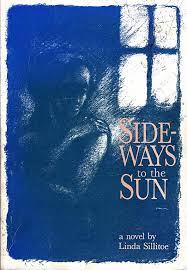Articles/Essays – Volume 21, No. 2
Women Coping | Linda Sillitoe, Sideways to the Sun
What happens when a Mormon house wife, faithful to husband and church, encounters the dark side of human experience including adultery, child molestation, spouse abandonment, and divorce? In this fine first novel, Linda Sillitoe answers that question with a courage and honesty that is most welcome in Mormon literature.
She gives us the story of Megan Stevens, whose husband vanishes without warning or explanation, leaving her and their children to fend for themselves. Trying to cope with her bereavement and locate her husband, she draws strength from Kristen, a divorced woman in her ward, and from her own newly discovered inner resources. The novel contains no epiphanies, no sudden and magical solutions. Life simply deals rotten cards some times, Sillitoe is saying, and we have to play them as best we can, with all the patience, creativity, and good humor we can muster.
In working through her tribulation, Megan finds most of the expected sources of support to be neutral at best. Her church is especially ambiguous; as a faithful married woman with children but no husband, she fits none of the Church’s convenient categories, a fact that neither she nor the Church can immediately assimilate. The predictable Relief Society casseroles are as effective as aspirin in a cancer case, and other programs prove little better. Megan finds it helpful to establish a certain distance from the Church: she serves as a visiting teacher but attends only the church meetings that she expects will be personally useful. She discards her temple garments in a particularly memorable and significant passage, finding in the absence of their symbolic armor an opportunity to engage the world directly in a way she has not done before. Megan never leaves her church, but she finds that in coping with experiences for which it neither prepared her nor offers satisfying answers, she has to back away from it and find her own solutions.
Megan does not automatically flee to another man, or to men in general, for support. She engages in a mildly romantic relationship with another man, but he offers few practical solutions to either the day-to day necessities of living or her recent emotional trauma. When her daughter is recruited as a possible plural wife by her seminary teacher, Megan realizes it is a matter properly left to the priesthood but instead takes matters into her own hands and achieves the satisfaction of dealing with the problem herself.
Mormon women have their own heritage and their own problems not shared by women elsewhere. The women’s movement applies to them in unique ways. In coping with their problems, they need to develop their own thinkers, their own history, and their own literature. Mormon feminism is the mainspring of Sideways to the Sun, and Mormon women trying to find a new identity ought to find much interest and inspiration in it.
Sillitoe’s literary power is so impressive that I sometimes wish she had sought a broader audience than the Mormon public to which this novel is directed and to which it will be limited. Interpreting Mormon experience for a wider world is, as Wallace Stegner has observed, a formidable task, since the writer is constantly obligated to explain the culture about which he or she is writing—an obligation not imposed upon writers interpreting cultures with more widely recognized traditions. Sillitoe explains nothing; she assumes an understanding of Mormon theology, institutions, and folkways that only Mormon readers, or those who have lived in Mormon country or made a special study of it, will possess. She has, of course, the right to seek whatever audience she wishes, but writers of her sophistication emerge so rarely within Mormondom that I have to hope her future work will accept the greater challenge.
Sideways to the Sun by Linda Sillitoe (Salt Lake City: Signature Books, 1987), 255 pp., $7.95.


 Back to full Issue
Back to full Issue

